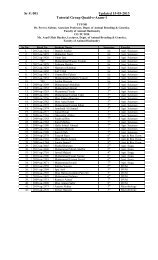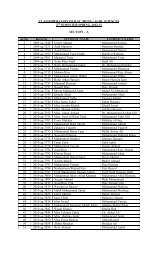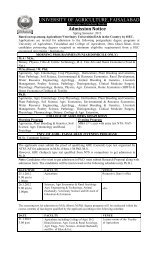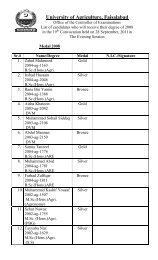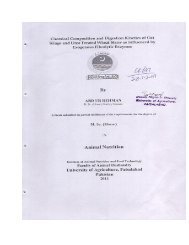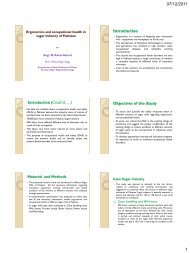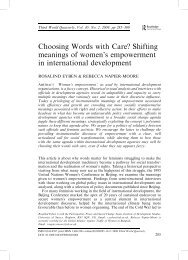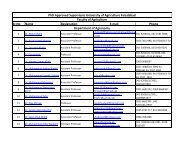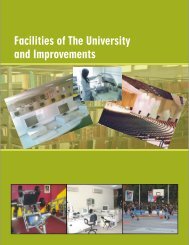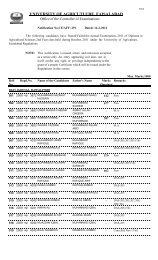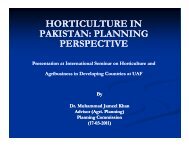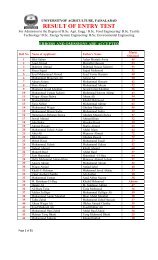Ecofeminism in the twenty-first century
Ecofeminism in the twenty-first century
Ecofeminism in the twenty-first century
- No tags were found...
Create successful ePaper yourself
Turn your PDF publications into a flip-book with our unique Google optimized e-Paper software.
collect medic<strong>in</strong>al plants. In a FAO supported project <strong>the</strong>y went out for walks to identify<strong>the</strong>se pants. Women participat<strong>in</strong>g <strong>in</strong> <strong>the</strong> activity expressed <strong>the</strong>ir desire to record <strong>the</strong>collected <strong>in</strong>formation. One of <strong>the</strong>m, Zer Malik, said:“We want our daughters to be able to see how much knowledge <strong>the</strong>ir ‘illiterate’mo<strong>the</strong>rs actually possessed. Our daughters are not so <strong>in</strong>terested <strong>in</strong> traditional remediesand are turn<strong>in</strong>g more and more to modern allopathic medic<strong>in</strong>e.” (FAO, 1997-1)Women still play an important role <strong>in</strong> fish<strong>in</strong>g communities. Sometimes <strong>the</strong>y go outfish<strong>in</strong>g <strong>the</strong>mselves, but more often it is <strong>the</strong>y who handle <strong>the</strong> preservation and market<strong>in</strong>g(Steady, 1985, 47-50). O<strong>the</strong>r water organisms like cockles, are be<strong>in</strong>g used and managedby women.Accord<strong>in</strong>g to Ester Boserup (1989) and o<strong>the</strong>rs, women - daily deal<strong>in</strong>g with vegetablefoods and wild seeds to experiment by way of plant<strong>in</strong>g <strong>the</strong> seeds - have played a majorrole <strong>in</strong> <strong>the</strong> revolutionary <strong>in</strong>novation from ga<strong>the</strong>r<strong>in</strong>g <strong>in</strong>to production of food, throughslash-and-burn cultivation. Because food collection required a thorough knowledge ofplant and animal growth, maturation and fruition or reproduction, women have beencredited with <strong>the</strong> discovery of domestication and cultivation of plants and animals and<strong>in</strong>vented selective breed<strong>in</strong>g. They discovered propagation by shoots and cutt<strong>in</strong>gs, seedselection and <strong>the</strong> construction of seedl<strong>in</strong>g beds. The follow<strong>in</strong>g <strong>in</strong>ventions are credited towomen <strong>in</strong> cultivation: <strong>the</strong> use of ash as fertilizer, <strong>the</strong> creation of work tools such as <strong>the</strong>hoe, spade, shovel and simple plough; fallow<strong>in</strong>g and crop rotation; mulch<strong>in</strong>g, terrac<strong>in</strong>g,contour plant<strong>in</strong>g, irrigation and land recuperation through tree plant<strong>in</strong>g. Eight out of <strong>the</strong>most important cereals (worldwide) were all domesticated by women: wheat, rice,barley, oats, sorghum , millet and rye (Stanley, 1982). Sir Alfred Howard <strong>in</strong> his ‘AnAgricultural Testament’ of 1940, underl<strong>in</strong>ed that he saw <strong>in</strong> India’s peasant a knowledgeof farm<strong>in</strong>g far more advanced than that of <strong>the</strong> West. In this landuse women played anessential role.In a study on women’s roles <strong>in</strong> food production <strong>in</strong> villages <strong>in</strong> <strong>the</strong> Garhwal Himalaya(Shiva et al, 1990) it became obvious that women played a major role <strong>in</strong> naturalfarm<strong>in</strong>g, <strong>the</strong> farm<strong>in</strong>g which is based on susta<strong>in</strong>able flows of fertility from forests andfarm animals to croplands. These food systems have always <strong>in</strong>cluded <strong>the</strong> forest andanimal systems <strong>in</strong> <strong>the</strong>ir processes. Women’s work <strong>in</strong> agriculture has traditionally beenwork <strong>in</strong> <strong>in</strong>tegrat<strong>in</strong>g forestry and animal husbandry <strong>in</strong> farm<strong>in</strong>g. The <strong>in</strong>ternally recycledresources provide <strong>the</strong> necessary <strong>in</strong>puts for seeds, soil moisture, soil nutrients, and pestcontrol.In Africa women produce 80% of <strong>the</strong> consumed food, <strong>in</strong> Asia this percentage is 60%and <strong>in</strong> Lat<strong>in</strong> America 40%. Accord<strong>in</strong>g to <strong>the</strong> FAO women make up 45% of <strong>the</strong> totalagricultural labor force throughout Asia. This <strong>in</strong>cludes work <strong>in</strong> subsistence farm<strong>in</strong>g aswell as on export-oriented farms and plantations. But it was also concluded that womenoften work longer days on <strong>the</strong> fields than men, by as much as 43%. In <strong>the</strong> Noza subwatershed<strong>in</strong> Pakistan, an average work<strong>in</strong>g day for a Brahui woman is seventeen hourslong dur<strong>in</strong>g <strong>the</strong> productive season. (FAO, 1997-1) S<strong>in</strong>gh (1988) describes women’scontribution <strong>in</strong> animal husbandry <strong>in</strong> Nor<strong>the</strong>rn India as follows: <strong>the</strong> woman harvests <strong>the</strong>crops and stakes <strong>the</strong> hay for domestic animals, she transports <strong>the</strong> leaf fodder, and6



